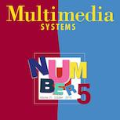The recent development of deep learning methods provides a new approach to optimize the belief propagation (BP) decoding of linear codes. However, the limitation of existing works is that the scale of neural networks increases rapidly with the codelength, thus they can only support short to moderate codelengths. From the point view of practicality, we propose a high-performance neural min-sum (MS) decoding method that makes full use of the lifting structure of protograph low-density parity-check (LDPC) codes. By this means, the size of the parameter array of each layer in the neural decoder only equals the number of edge-types for arbitrary codelengths. In particular, for protograph LDPC codes, the proposed neural MS decoder is constructed in a special way such that identical parameters are shared by a bundle of edges derived from the same edge-type. To reduce the complexity and overcome the vanishing gradient problem in training the proposed neural MS decoder, an iteration-by-iteration (i.e., layer-by-layer in neural networks) greedy training method is proposed. With this, the proposed neural MS decoder tends to be optimized with faster convergence, which is aligned with the early termination mechanism widely used in practice. To further enhance the generalization ability of the proposed neural MS decoder, a codelength/rate compatible training method is proposed, which randomly selects samples from a set of codes lifted from the same base code. As a theoretical performance evaluation tool, a trajectory-based extrinsic information transfer (T-EXIT) chart is developed for various decoders. Both T-EXIT and simulation results show that the optimized MS decoding can provide faster convergence and up to 1dB gain compared with the plain MS decoding and its variants with only slightly increased complexity. In addition, it can even outperform the sum-product algorithm for some short codes.
翻译:最近深层学习方法的开发为优化线性代码的信仰传播(BP)解码提供了一种新的方法。 但是,现有工程的限制是,神经网络的规模随着代码长而迅速增加,因此只能支持短到中代码长。 从实用性的观点来看,我们建议采用高性能神经中值(MS)解码方法,充分利用编程结构的提升结构低密度对等检查(LDPC)代码。这意味着神经脱色器中每个层的分解参数阵列的大小仅相当于任意代码的边缘-EX类型的数量。特别是,对于LDPC的编程代码,拟议的神经变异网络中神经变异的变异体规模。为了减少复杂性并克服在培训拟议的神经调解码(LDPC)中出现的渐变变变变变变变变变变变变变变变变变变变变变变变变变变变变变变变变变变变变变变变变变变变变变变变变变变变变变变变变变变变变变变变变变变变变变变变变变变变变变变变变变变变变变变变变变变变变变变变变变变变变变变变变变变变变变变变变变变变变变变变变变变变变变变变变变变变变变变变变变变。




